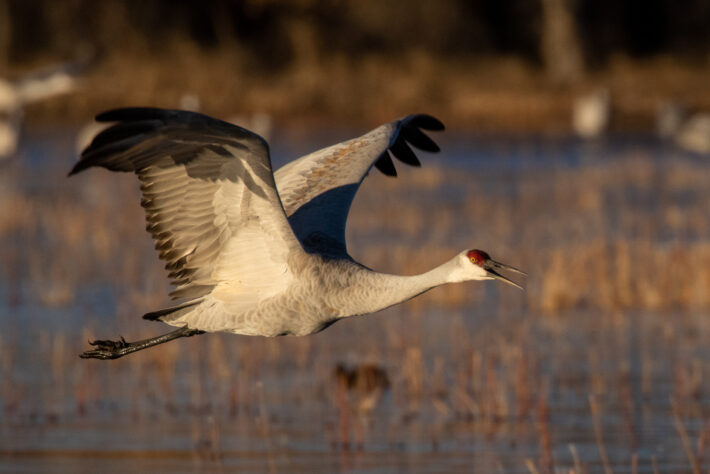
In early December we made our annual trip to Bosque to photograph the geese and cranes who come there every year to winter. After being cancelled last year due to the pandemic, we were anxious to return. We update our COVID research, and reviewed our travel style. Chasing wildlife to photograph put us outdoors and made physically distancing easy, and with reasonable precautions we concluded that the risk remained low and acceptable to us.
Like the rest of the West, New Mexico is undergoing a serve drought and water was at a premium on the refuge. The corn crop didn’t get its expected irrigation leading to a less than normal crop, which resulted in bird counts being down a bit. And its seemed like only a fraction of ponds normally flooded were, which didn’t help the bird counts either.. But it did had one advantage, it made it easier to find the birds as they congregated at the ponds with water.
While we didn’t get all the geese blast offs we wanted, we got plenty of fly-ins.
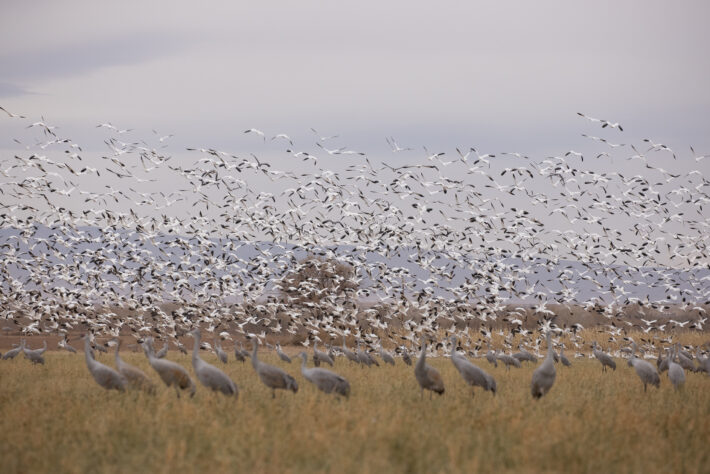
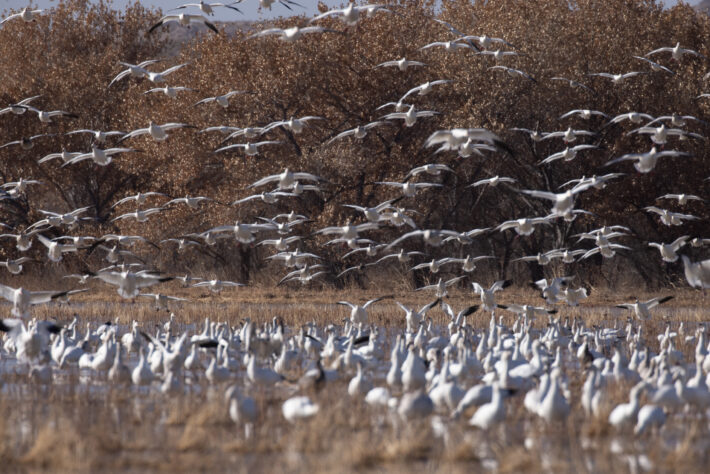
The geese are also were impressive flying in smaller numbers
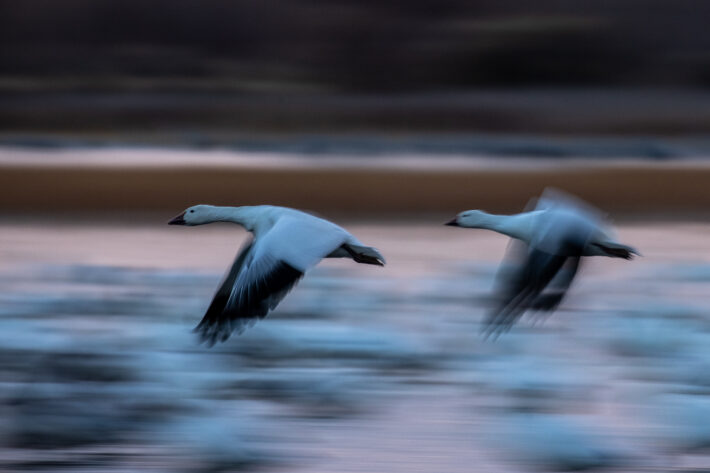
As were Bosque’s other ionic bird, the sandhill crane
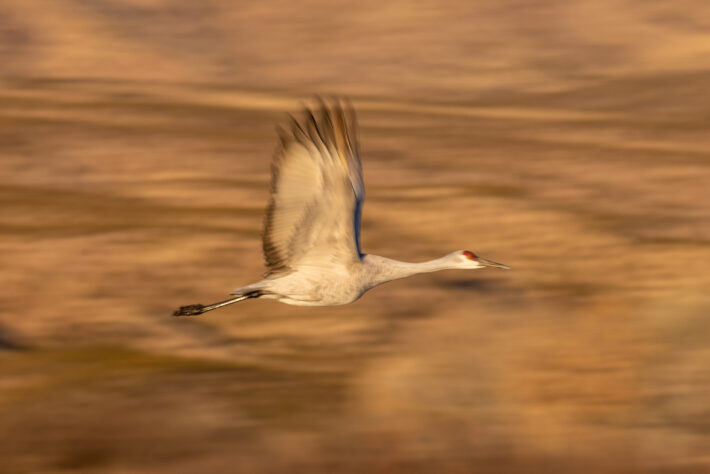
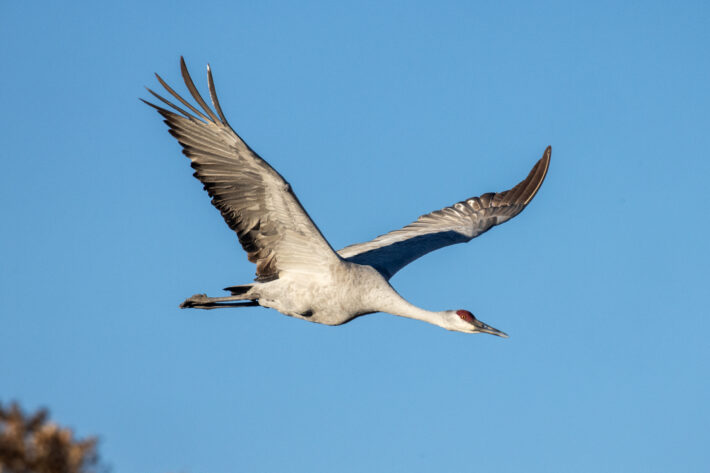
This year almost as common as the cranes and geese were the red winged blackbirds. It seemed like they were also everywhere that the cranes and geese were
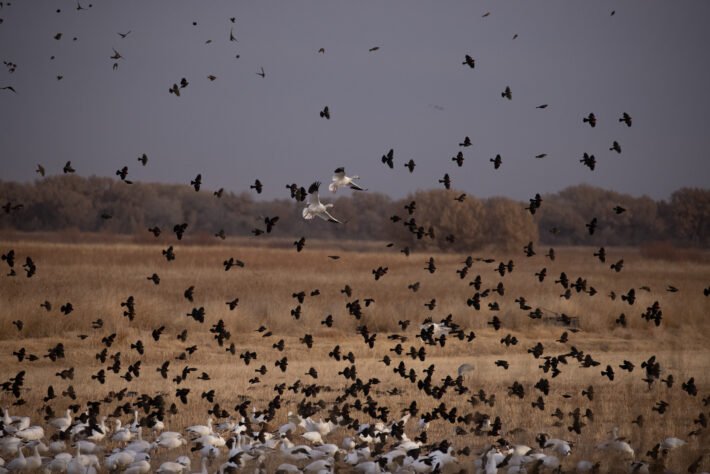
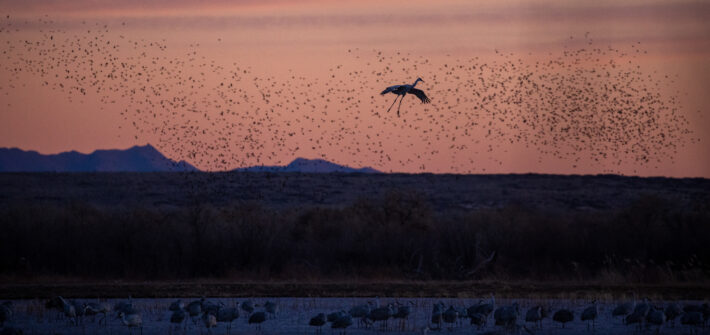
But really what made the blackbirds so interesting to photograph was their murmurations. These sky dances see birds gather together, swooping and twisting in one spectacular swarm, and behavior more normally associated with starlings.
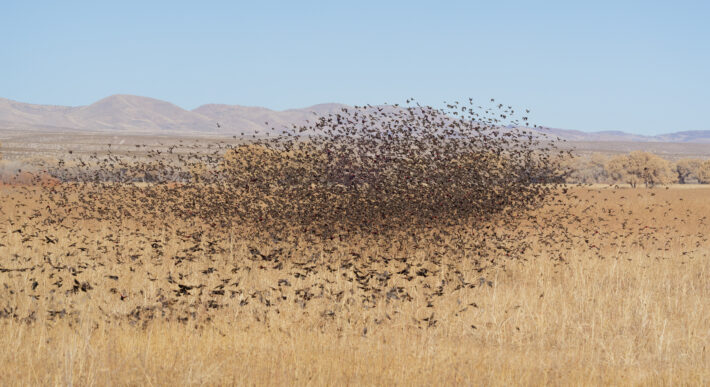
While the crane and geese numbers were down a bit, it was made up for by more frequent sightings of some of the less notable wildlife on the Refuge, like the several flocks of wild turkey we saw. Like the rest of the wildlife, they were attracted to the water on the refuge, and unlike domestic turkeys, these guys can fly.
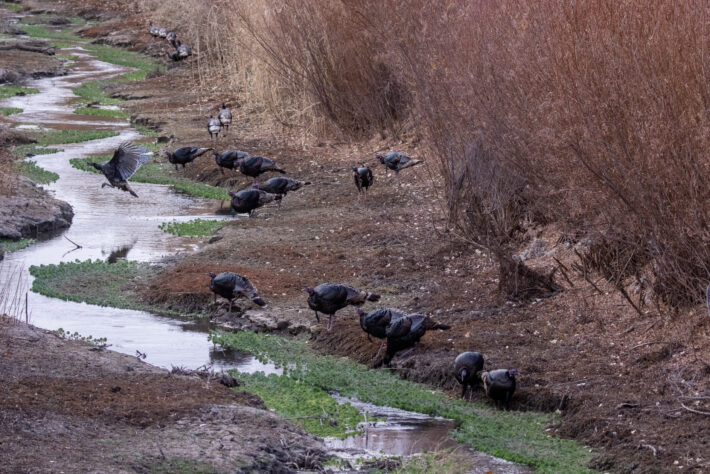

The most unusual bird we saw was a pelican. Usually you think of pelicans as salt water birds, frequenting the bays and oceans. Finding them inland, thousands of miles from the sea was unexpected and a first for us in Bosque. The pelican we saw was a white pelican, who breed in Canada and migrate south during the winter. In our home waters, SF Bay, we are used to seeing the brown pelican, whose range is limited to the US and Mexico coasts and the Caribbean.
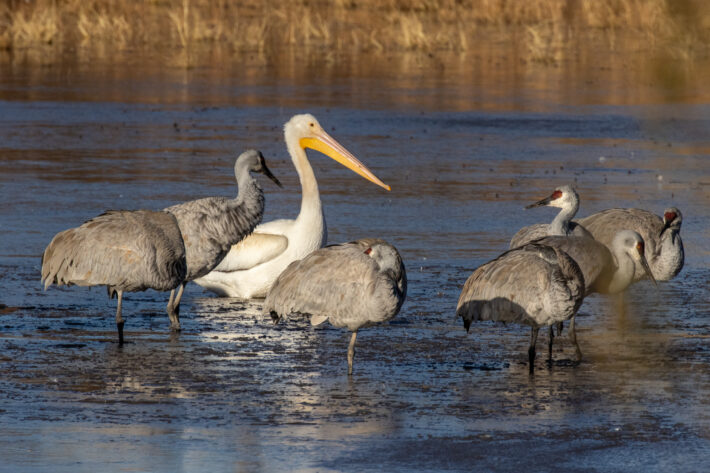 The pelicans presence was big news for the refuge
The pelicans presence was big news for the refuge
The one animal that was not up to normal frequency was the coyotes. We saw a few, but they were at the other side of the field, a few pixels big.
[ngg src=”galleries” ids=”23″ display=”basic_thumbnail”]
New Mexico was know for its beautiful sunrises and sunsets, and we were not disappointed. Not only did we get a few mornings of beautiful color
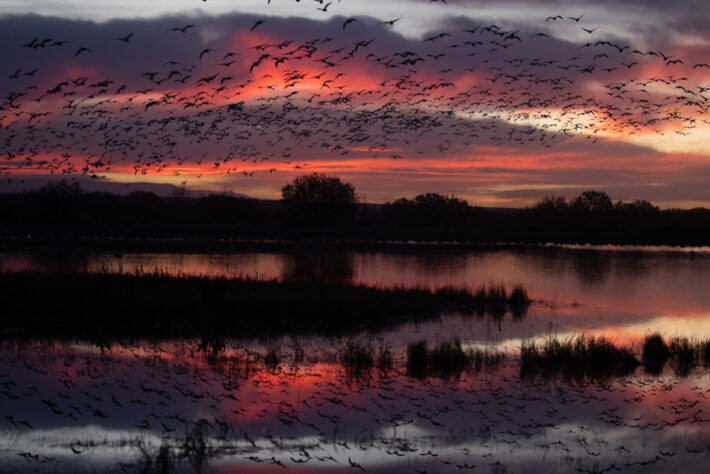 but also many ‘golden’ hours (the hour after sunrise and the hour before sunset) when the soft diffuse light produces exquisite photographs.
but also many ‘golden’ hours (the hour after sunrise and the hour before sunset) when the soft diffuse light produces exquisite photographs.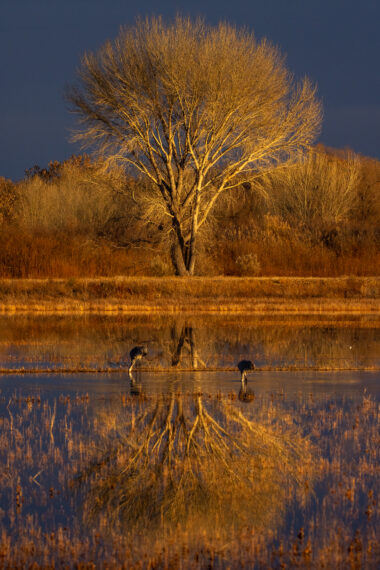
We definitely plan on going back next year.